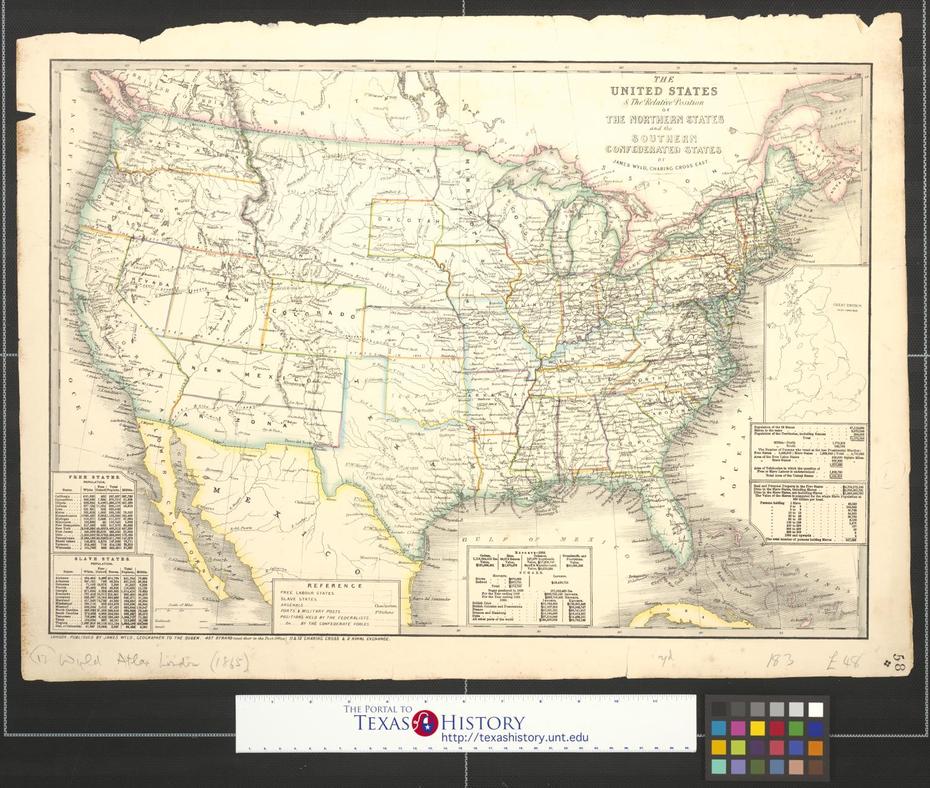Civil Rights : The Right to Vote

Postcard with a photo of Andy Nelson in a wagon. He was born in slavery in 1862 and later became free. His life spanned from slavery to the Civil Rights movement.
Mid-nineteenth century United States geography, territories, and major cities. Includes tables of population statistics for "free states" and the "slave states" along with exports, presidential voting data and property in slave and free states.
PDF
Anderson County Courthouse day of the Freedmen's first vote. Their horses are tied to the railing and Union guards watch over to prevent opposition from taking them and harming anyone.
PDF
Receipt of poll tax paid in the amount of $1.75 by A.M. Avant in Pleasanton, Texas confirming his county of residence, his race, age and occupation. It is signed by the County Tax Collector.
PDF
A community-wide movement to get support to "repeal" the poll tax. League of Women's Voters (LVW) spear-head the cause in Denton, Texas.
The Civil Rights Bill and Bill for Enforcement of the XVth Amendment to get support "for equal civil and political rights for all American people". Republican and Democratic votes by state are listed [image from the African-American Pamphlet Home Page, Library of Congress].
School house in Diboll, Texas. The school is for Anglo-American children and has about 150 students in attendance with two or three teachers.
School house in Diboll, Texas. The school is for African American students. There are about 30 students and one teacher.
PDF
Built in 1911 the Westside school was for the city's growing Mexican American population. The two-room building served students until 1932 when a brickhouse was erected one block west of this site. Inequality was challenged by the American G.I. forum and the League of United Latin American citizens.
An article in "Legacies: A History Journal for Dallas and North Central Texas" describes how Dallas' largest circulating African-American newspaper made a strong stand for equal rights beginning in the 1940's.
Jacobs reading the latest news from the newspaper "The Black Dispatch". The headlines blare "East Central Teachers deny Jim Crow vote."
Leaders of the National Association for the Advancement of Colored People NAACP were ministers, dentists, businessmen, lawyers, housewives, labor leaders and doctors. Prominent members were Lulu White of Houston and Juanita Craft of Dallas. Together these folks rallied to organize, direct and support the civil rights movement in Texas.
Importance of a balanced curriculum with emphasis on art such as clay modeling, glazing, weaving, spatter painting, finger painting, tray mats, textile planting, tye dying, etching, murals, glass painting, tooling, among others were promoted. Students display their accomplishments in the classroom and hallways.
The Freedom program was developed to educate students of civic responsibility and citizenship. The objective was to create awareness that goverment by the people and for the people would survive only if everyone assumed active responsibility.
Created to uphold the 15th Amendment to the Constitution of the United States.To ensure that the right of citizens of the United States to vote is not denied or abridged on account of race or color. No citizen shall be denied the right to vote in any federal, state, or local election [image from "Our Documents" a National Initiative].
U.S. Commissioner of Education accepts school system's plan for upcoming year on implementing desegregation. Schools implement desegregation in compliance with Title VI of Civil Rights Act of 1964.
PDF



